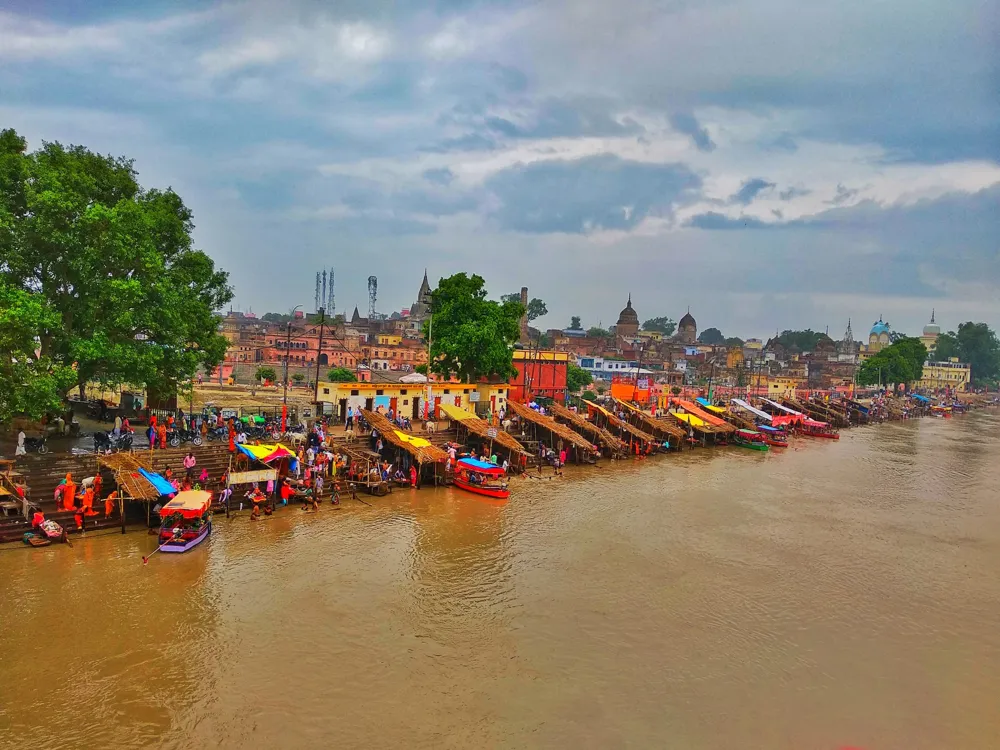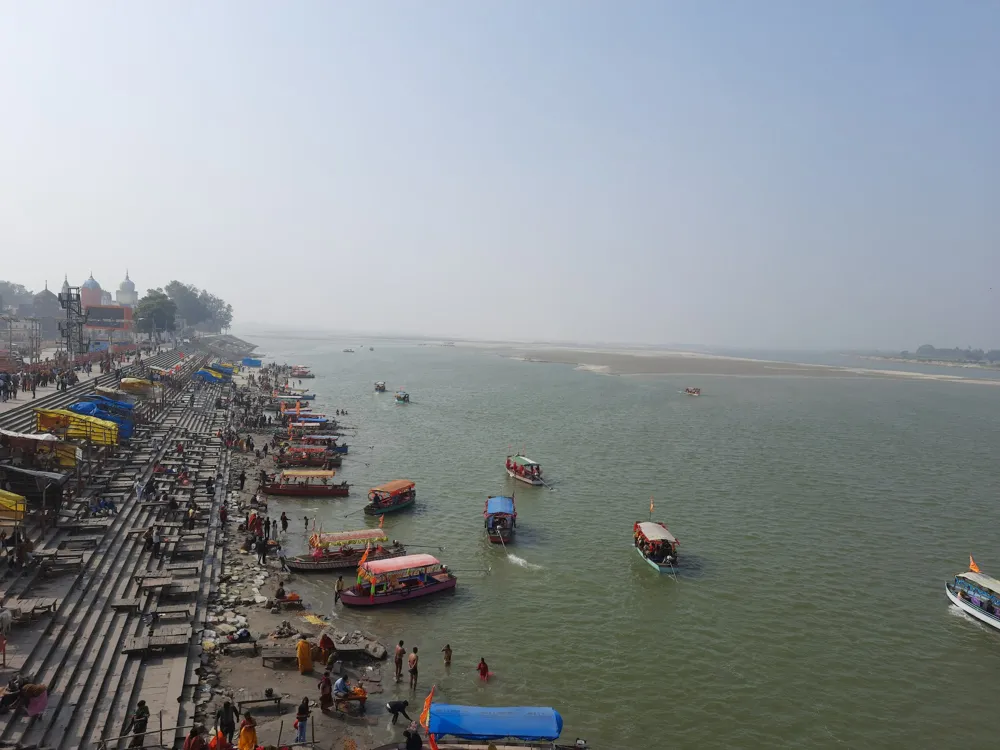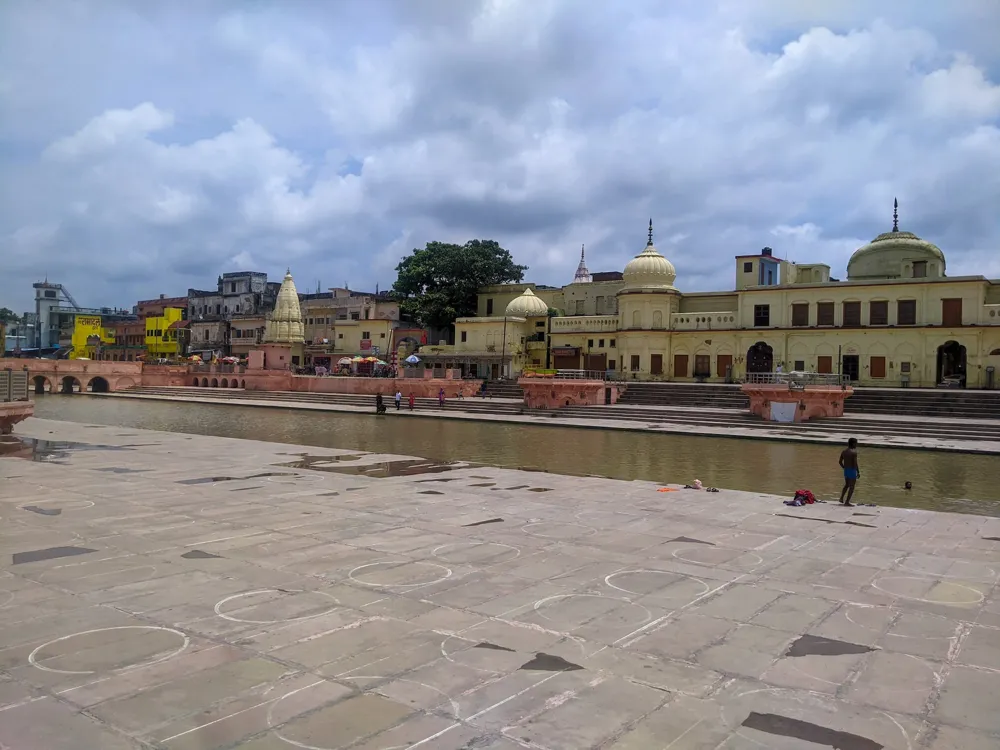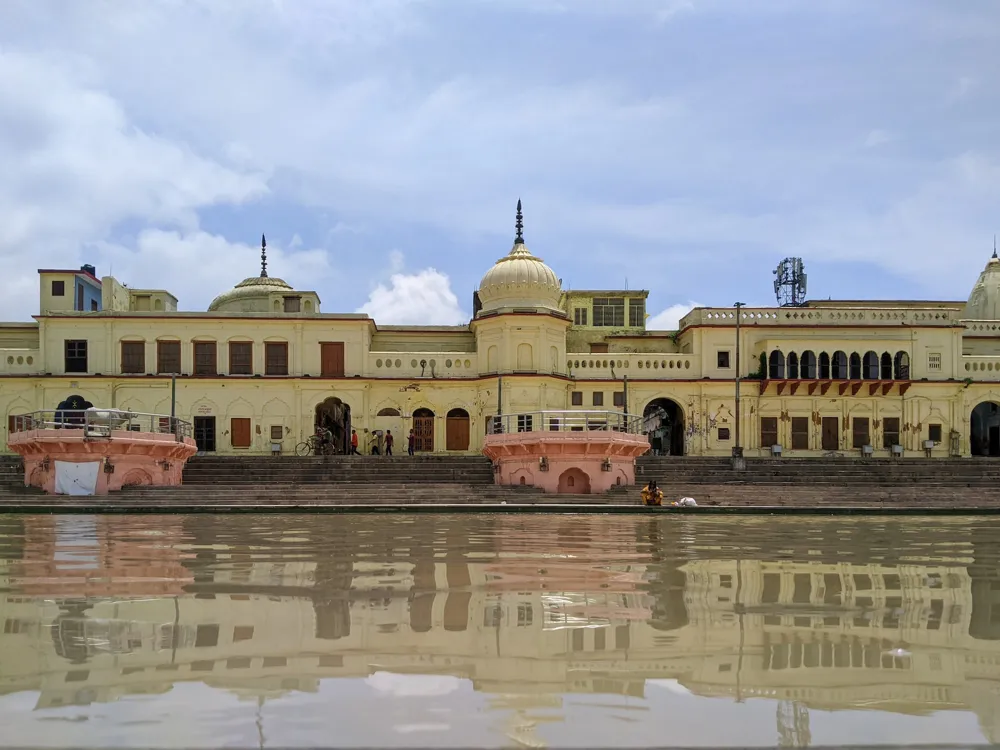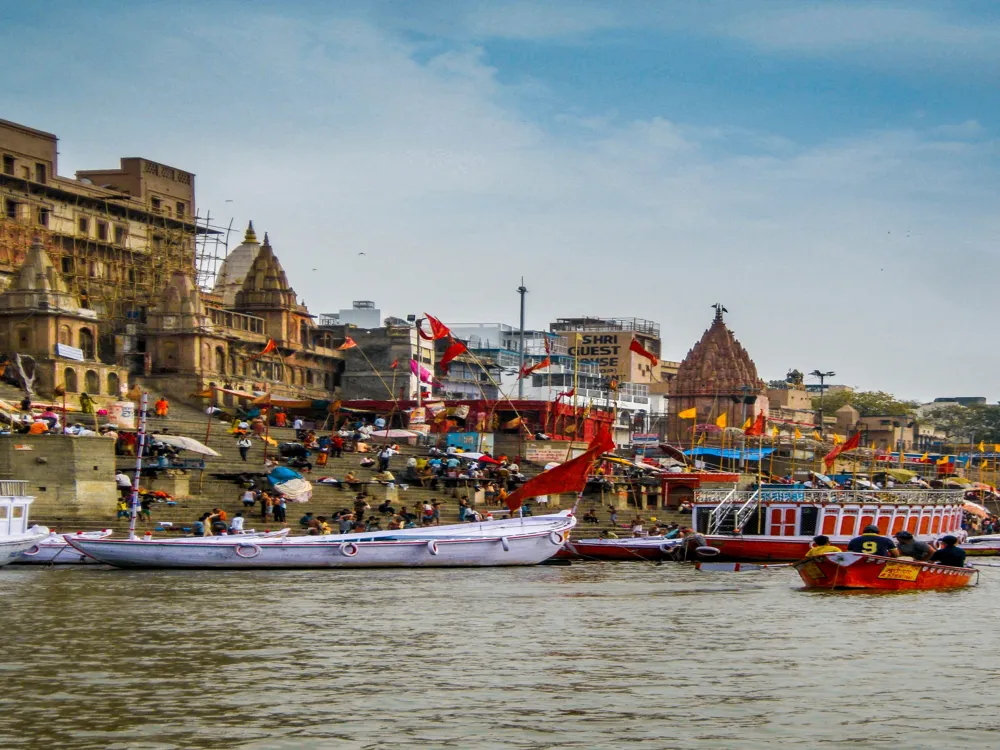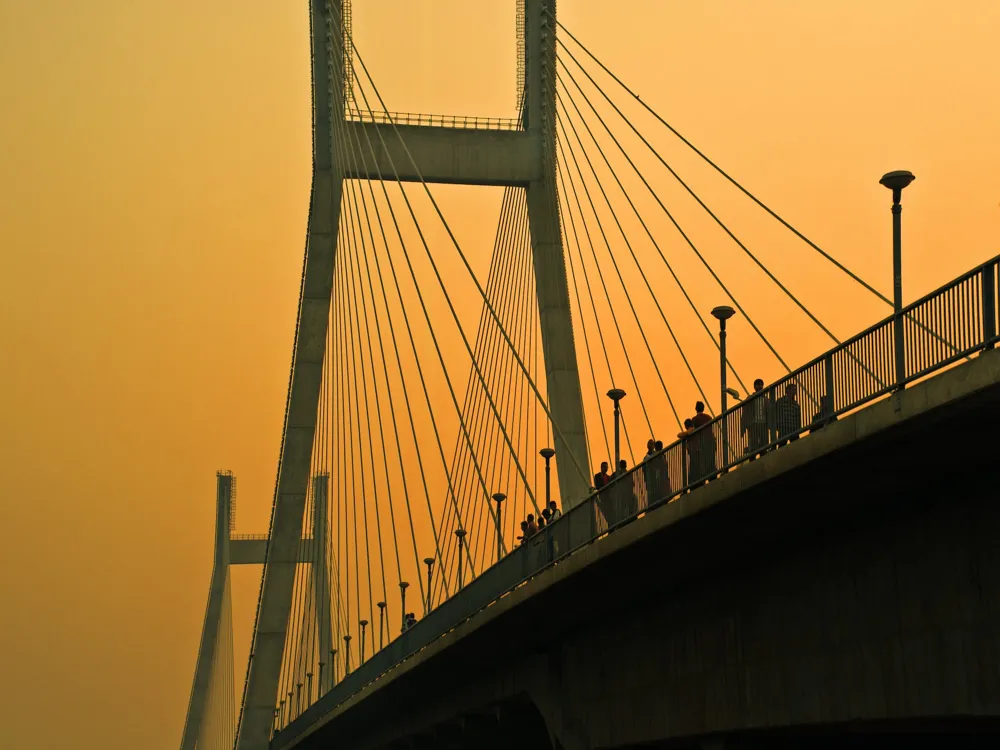Plan Your Travel To Ayodhya
Places To Visit In Ayodhya
Bahu Begum Ka Maqbara
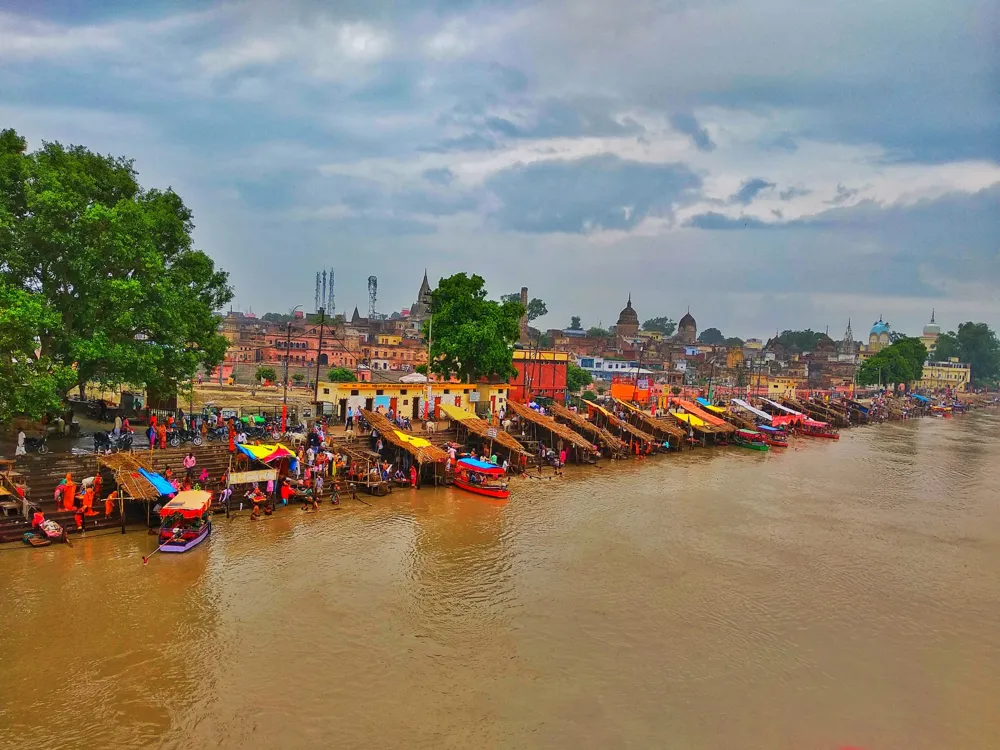
Located on the Maqbara Road in the town of Faizabad, Bahu Begum ka Makbara is a popularly known as the “Taj Mahal of the East”. The unique mausoleum dedicated to the Queen Bride Begum Unmatuzzohra Bano, wife and queen of Nawab Shuja- ud- Daula, is the tallest monument in all of Faizabad and is famous for its non-Mughal architectural brilliance.
A wonderful example of Awadhi architecture, the Bahu Begum ka Makbara has three domes, intricately designed interiors and marvellously done walls and ceilings. Built in 1816, in the memory of the Queen where she was buried after death, the shrine costed a grand total of three lakh rupees.Today, the premises are a protected site under the Archaeological Survey of India (ASI); the gardens in front of the complex have been beautifully done, and the place is an outstanding tourist site. A magnificent bird’s eye view of the entire city can also be seen from the top of the tomb.
Read More
Choti Chawni
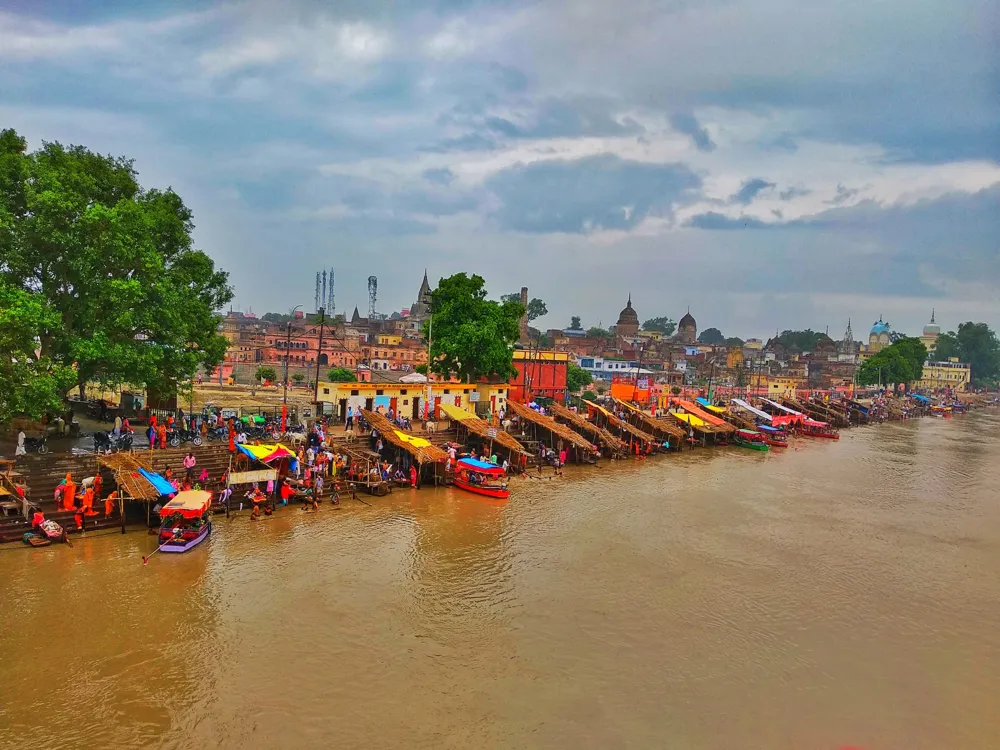
Also known as Valmiki Bhawan or Maniramdas Chawni, Choti Chawni is a magnificent structure in Ayodhya completely crafted out of white marble. A sigh of sheer beauty, this place is definitely worth a visit.
The heritage caves are 34 in number, 12 to the south are Buddhist, 17 in the centre are Hindu and 5 in the north are Jain, therefore making it a significant and elaborate architectural brilliance. The Kailasha Temple in the caves only adds to the intricate beauty of the structures.
Read More
Dashrath Bhavan
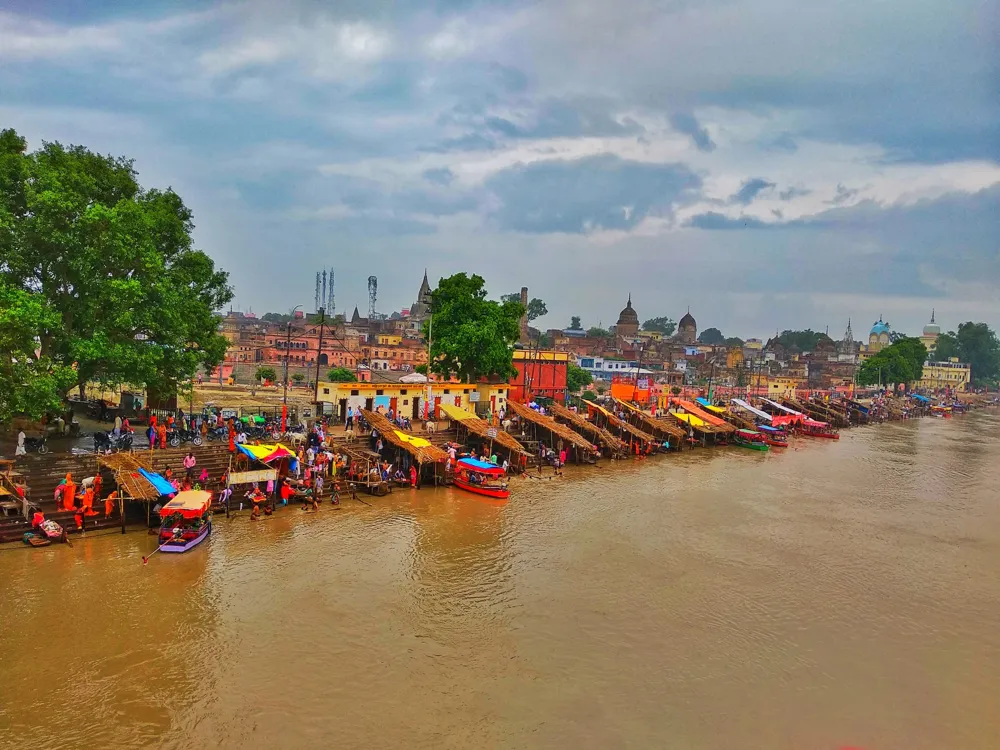
Located in the heart of the city, in Ramkot Ayodhya, in Faizabad; Dashrath Bhavan is the original residence of King Dashrath- the ruler of Ayodhya and father to Lord Sri Ram. Popularly known as Bada Asthan or Badi Jagah, Dashrath Mahal houses magnificent shrines of King Ram.
Believed to have housed Lord Rama's childhood and King Dasharath's capital, this pretty palace hosts a decorated and ornamented entrance with beautiful paintings. Within the palace, there are saffron-clad monks chanting mantras, singing and dancing. Although relatively smaller than the superlative of a palace, the Dashrath Bhavan is a definite magnet during festivities such as Ram Vivah, Karthik Mela, Diwali, Ram Navami and Shravan Mela.
Read More
Gulab Bari
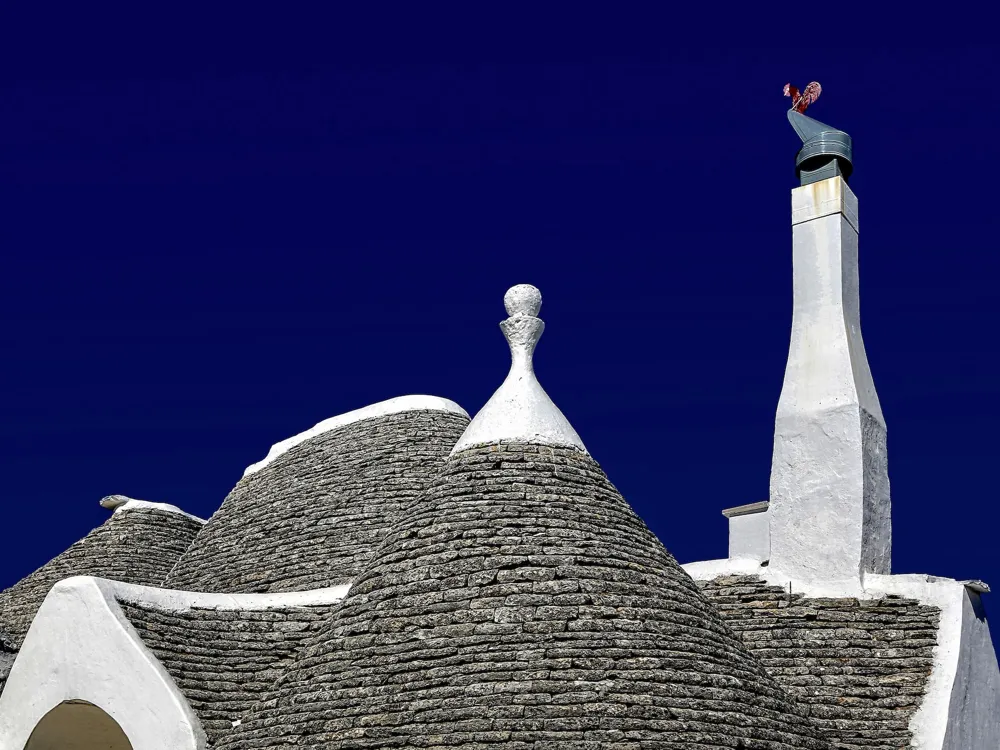
Also known as the Garden of Roses, the Gulab Bari is situated in Vaidehi Nagar. It is the tomb of the third Nawab of Faizabad (Oudh or Awadh), Nawab Shuja-ud-Daula and his parents.
The 18th-century structure of the Gulab Bari brings out pure Nawab-styled architecture alongside a vast array of rose species in addition to fountains and lush greenery. Listed under the Ancient Monuments and Archaeological Sites and Remains Act, Gulab Bari is currently preserved as a part of national heritage.
Read More
Guptar Ghat
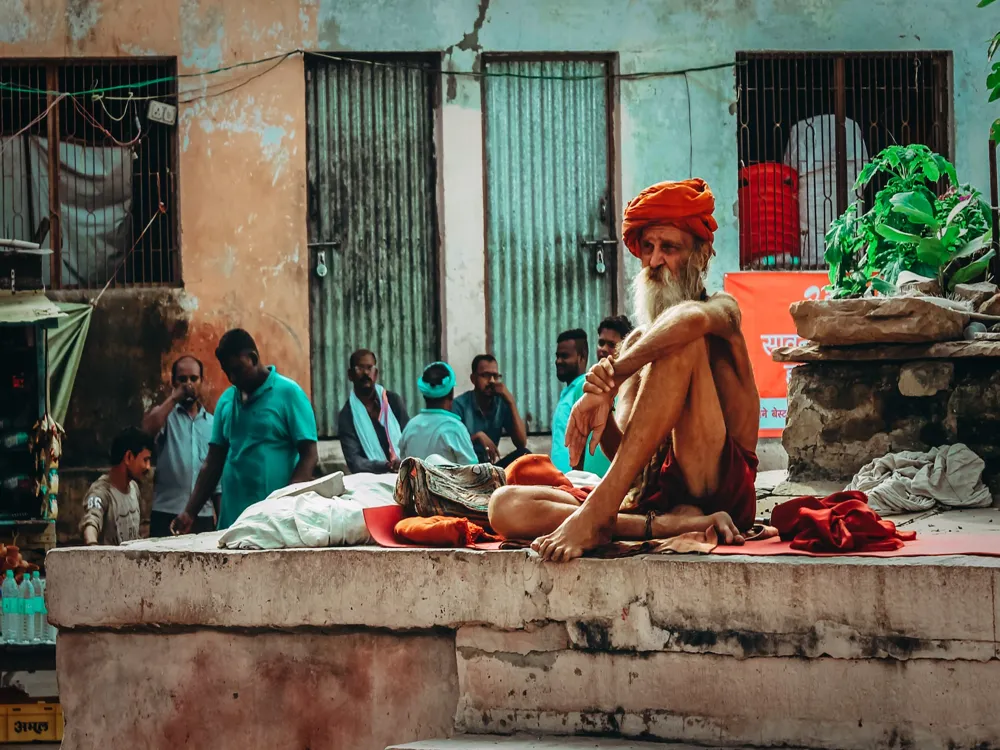
Situated on the banks of river Sarayu, also known as Ghaggar, Guptar Ghat is a revered site in Faizabad near Ayodhya. With a flight of steps leading to the holy river, this ghat was once the neighbour of the colonial Company Gardens, which is now known as the Gupta Ghat Van.
This place is said to be the place where the Hindu deity Lord Ram meditated and undertook the ‘Jal Samadhi’ in the river. After which, he attained ‘Baikuntha’ and descended into heaven as an avatar of Lord Vishnu. Among the several temples situated here, the Sita- Ram temple, Chakrahari shrine and the Narsingh temple are popular. Revamped in the 1800s and constantly improvised by the UP Government, the Guptar Ghat is currently equipped with modern amenities as well.
Read More
Hanuman Garhi, Ayodhya
Located in Sai Nagar, Hanuman Garhi is a 10th-century temple dedicated to the Hindu God, Hanuman. It is one of the most important temples in Ayodhya as it is customary to visit Hanuman Garhi before visiting the Ram Temple in Ayodhya. It is believed that Lord Hanuman lived at the temple site guarding Ayodhya.
The hilltop temple hones a 76-staircase pathway to the entrance. Housed within the panoramic view of the surrounding hills is a 6-inch-tall idol of Hanuman. The main temple has an interior cave adorned with the numerous statues of Lord Hanuman along with his mother, Maa Anjani. Ram Navami and Hanuman Jayanti, which celebrate the birth of Lord Ram and Lord Hanuman respectively, attract thousands of devotees to the Hanuman Garhi.
Read More
Kanak Bhawan
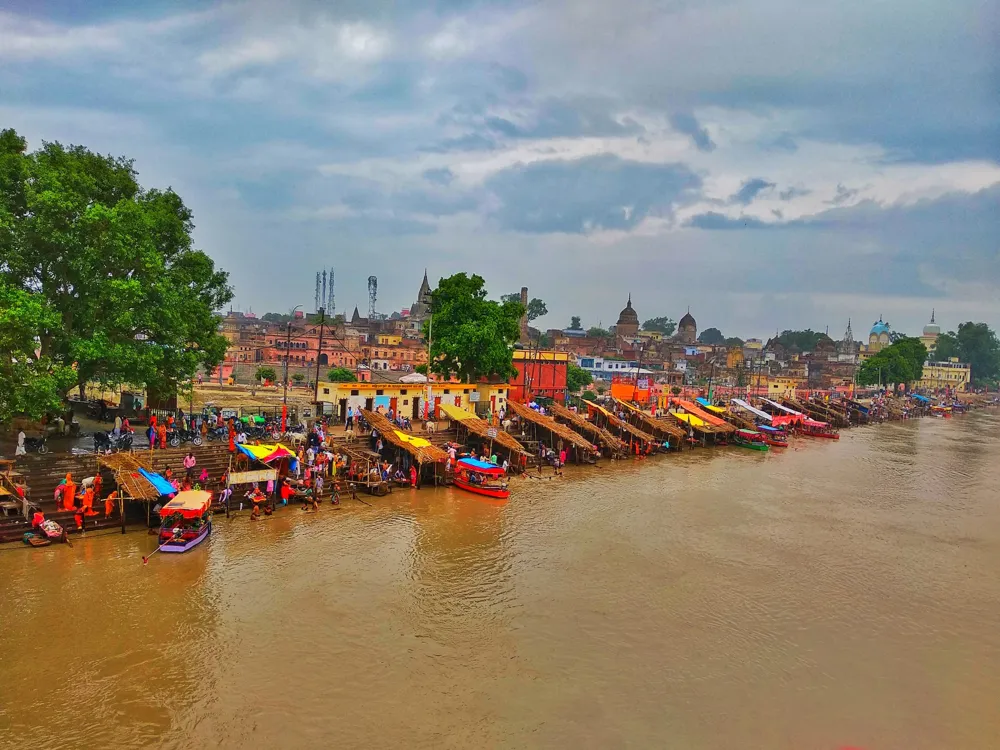
The Kanak Bhawan is established towards the northeastern corner of the Ram Janmabhoomi in Tulsi Nagar. Constructed in 1891, this temple is also known as Sone-ka-Ghar. It is a holy site dedicated to the Hindu deity Lord Rama and his wife, Goddess Sita.
Kanak Bhawan, also meaning Golden Palace, cites three golden-crowned idols of the two gods under a silver roof in the sanctum santorum (Garbagriha). It is believed that this shrine was gifted to Rama and Sita by the former's stepmother, Kaikeyi. Upon designed renovation during Vikramaditya's reign, the present site was further entirely revamped by Vrish Bhanu Kunwari. This Bundela-styled temple is currently managed by the Sri Vrishbhan Dharma Setu Trust Private Limited
Read More
Mani Parbat

Situated about 65 feet above sea level, Mani Parbat is a tiny hillock situated in Kami Ganj, Ayodhya. Besides being a great city viewpoint, the Parbat also houses a stupa built by Emperor Ashoka and a Buddhist monastery.
Housing a line of religious shrines, Mani Parbat is located quite close to another hilly mound called the Sugriv Parbat. There is an Islamic mausoleum at the foothills of Mani Parbat.
Moti Mahal
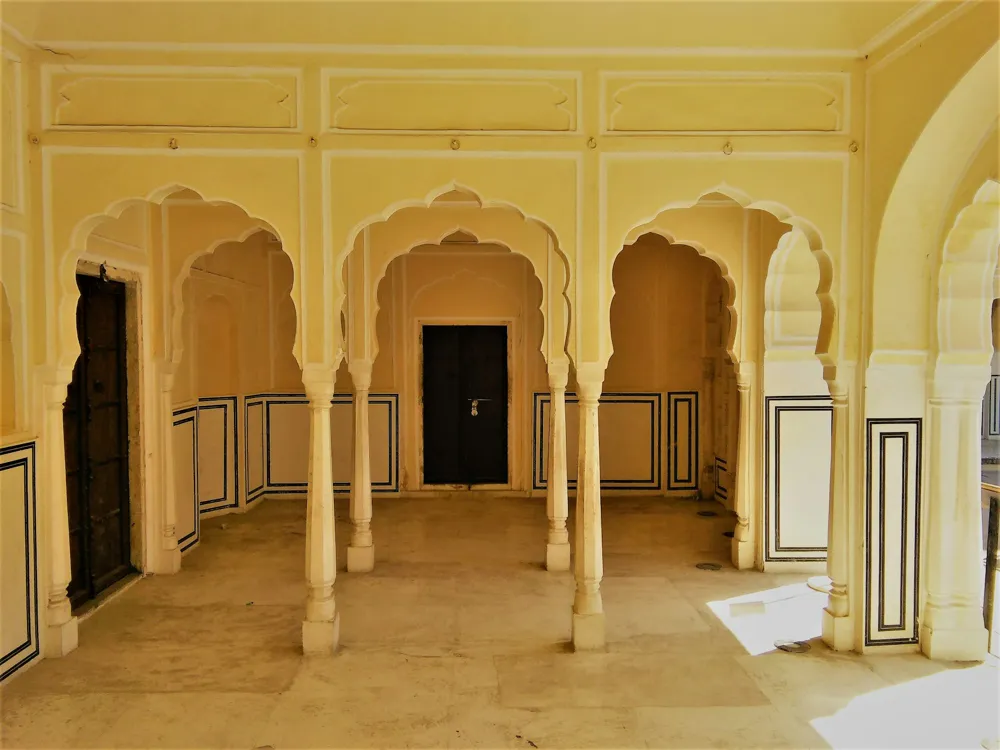
Popularly known as the ‘Pearl Palace’, Moti Mahal is located a few kilometres away from the town of Ayodhya in Faizabad. Built in 1743 AD, the palace was a residence of the Queen Begum Unmatuzzohra Banu, wife of the then Nawab Shuja-ud- Daulah. A fine marvel of Mughal architecture, the grandeur of the monument reverberates with the rich heritage of the Nawabi culture.
Nageshwarnath Temple
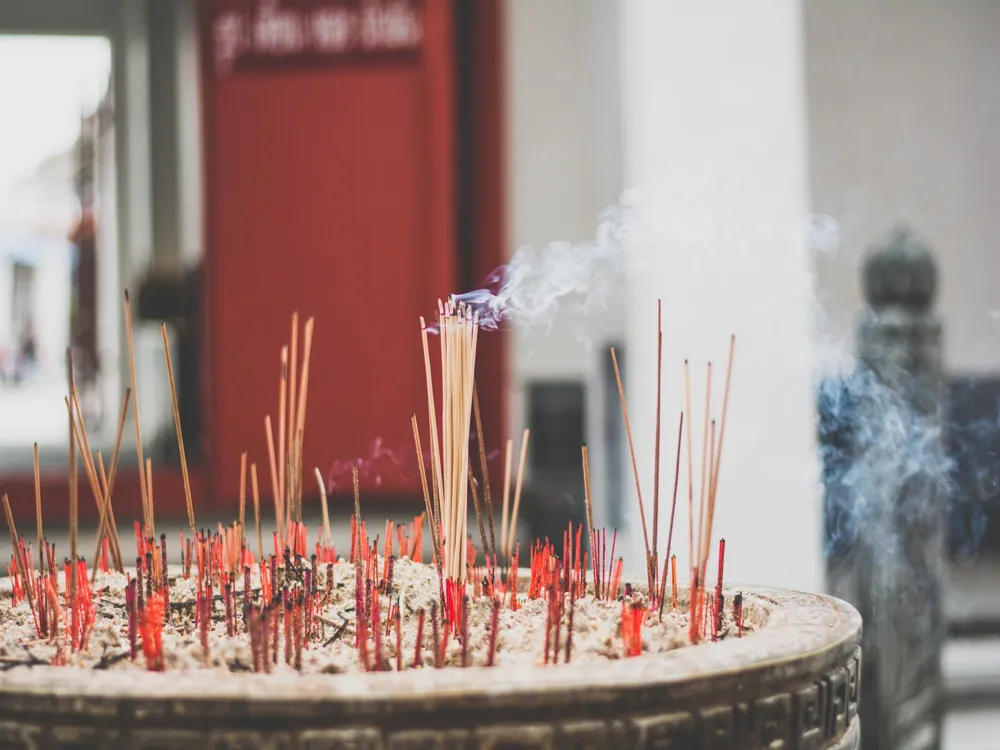
Established in the name of the local deity, Lord Nageshwarnath, the Nageshwarnath Temple is located adjacent to the Theri Bazaar in Ayodhya. It is believed to have been set up by Kush or Kusha, Lord Rama's son.
Although this sacred site continued to be in good maintenance since 750 AD, the current temple is said to have been reconstructed in 1750 by Safar Jung's minister, Naval Rai. Legend has it that Kush came across a Shiva devotee called Naga Kanya when he happened to lose his arm ring in the local bath. Upon learning that the latter had fallen in love with him, he raised this Shaiva temple for Naga Kanya. The Nageshwarnath Temple attracts numerous devotees during Mahashivaratri and Trayodashi, also known as Pradosh Vrat or Pradosh Vratam, in Southern India. The Shiva Barat or the procession of Lord Shiva is a significant attraction here.
Read More
Ayodhya Travel Packages
View All Travel Packages Ayodhya
Nearby Places Ayodhya
Browse Package Collections
Browse Hotel Collections










